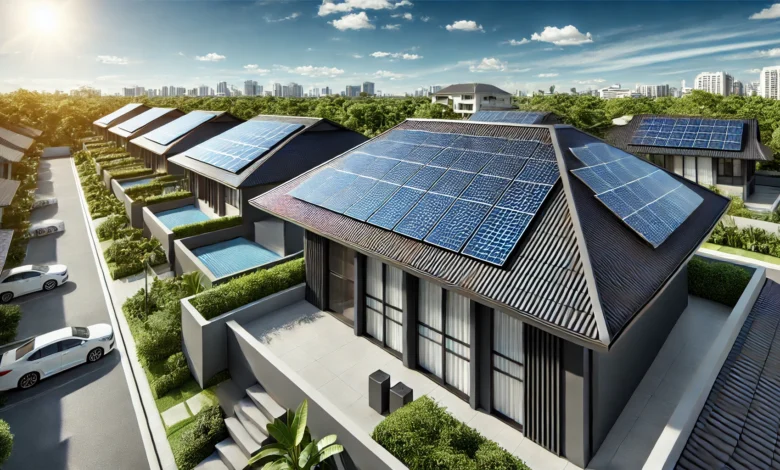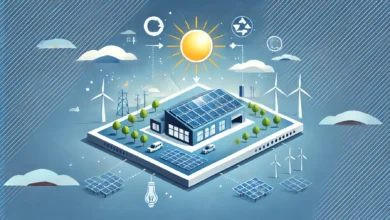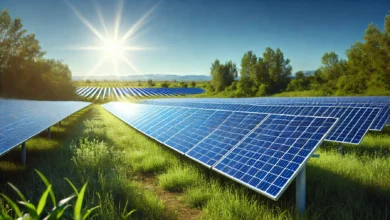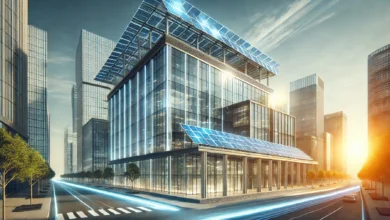Monocrystalline Solar Panels Features, Benefits and Costs

Solar energy is revolutionizing how homes and businesses get the power they need. Among the numerous types of solar panels in the market today, Monocrystalline solar panels offer the highest efficiency, nice aesthetics, and durability.
This article will explore what monocrystalline panels are, how they work, their advantages and disadvantages, their costs in 2025, and whether or not they fit into your renewable energy undertaking.
Contents
- 1 What Are Monocrystalline Solar Panels?
- 2 How Do Monocrystalline Solar Panels Work?
- 3 Benefits of Monocrystalline Solar Panels
- 4 Cons of Monocrystalline Solar Panels
- 5 The Price of Monocrystalline Solar Panels – 2025
- 6 Monocrystalline Comparison with Other Panels
- 7 Who is an Ideal Candidate for Monocrystalline Panels?
- 8 Are Monocrystalline Solar Panels the Right Option for You?
- 9 Frequent Questions
What Are Monocrystalline Solar Panels?
Monocrystalline solar panels are manufactured with a single, crystalline silicon crystal. Each silicon wafer is sliced from the crystal, resulting in solar cells that have a consistent dark black color and high electron mobility. The structure allows electrons to move better, resulting in more efficient panels than polycrystalline panels or thin-film panels.
You may also consider Polycrystalline Solar Panels or Thin-Film Solar Panels if you are interested in other solar panel alternatives.
How Do Monocrystalline Solar Panels Work?
When sunlight strikes a monocrystalline cell, the silicon is excited and electrons are released; they move to generate an electric current. The current flows and collects into the inverter, which is how it’s converted into usable alternating current (AC) electricity for homes and businesses.
The purity of the silicon used in monocrystalline panels decreases electrical resistance, achieving higher energy conversion efficiency than other solar technologies.
Benefits of Monocrystalline Solar Panels
- High Efficiency: Generally, their efficiency ranges from 18% to 22%, and this can work well for installations with small roof space.
- Longevity: Most monocrystalline panels have warranties from 25 to 30 years, and they will still produce energy after that!
- Aesthetic Look: Their solid, all-black color fits perfectly with modern designs and architecture.
- Better High Temperature Performance: They perform slightly better than a polycrystalline in higher heats.
Cons of Monocrystalline Solar Panels
- Higher Price: The production process itself is costlier, which means higher dollar costs upfront than other panel types.
- Material Loss: There will be more waste of silicon during the production process, as cutting a wafer from single-crystals creates wasted material.
The Price of Monocrystalline Solar Panels – 2025
| System Size | Average Installed Cost (after 30% federal incentive) |
|---|---|
| 4 kW | $8,800 – $10,500 |
| 6 kW | $13,000 – $15,000 |
| 8 kW | $17,000 – $20,000 |
| 10 kW | $22,000 – $25,500 |
Pricing will also depend on your location, your installer and brand, and the local incentives available in your area.
Monocrystalline Comparison with Other Panels
| Feature | Monocrystalline | Polycrystalline | Thin-Film |
|---|---|---|---|
| Efficiency | 18%–22% | 15%–17% | 10%–13% |
| Cost | Higher | Lower | Lowest |
| Flexibility | Rigid | Rigid | Flexible |
Who is an Ideal Candidate for Monocrystalline Panels?
- Residential installs with limited rooftops needing high output in space.
- Commercial building installs needing both efficiency and aesthetic look.
- A property located in a highly priced electricity region.
- Off-grid systems, needing to provide energy for the long haul.
Are Monocrystalline Solar Panels the Right Option for You?
If you want maximum energy production for your space and a sleek look, they are probably your best option. However, if your big concern is cost rather than efficiency, you might want to look into alternatives like Polycrystalline Solar Panels or flexible options such as Thin-Film Solar Panels.
For a broader perspective on how solar fits into overall renewable strategies check out Ways to Power Your Home with Renewable Energy.
Frequent Questions
How long do monocrystalline solar panels last?
Generally they last 25–30+ years and still achieve good performance.
Are monocrystalline solar panels better than polycrystalline?
Generally, yes. Because their overall efficiency and sheer look usually is better than polycrystalline.
Why are monocrystalline panels more expensive?
The production process includes pure silicon crystals which adds complexity to manufacturing and higher costs.
Can I use a hybrid of monocrystalline and other panels?
You can technically do that but, it’s not typically recommended because it might create a mismatch in system efficiency and performance.
Are monocrystalline panels good for little roofs?
Absolutely. Monocrystalline panels have higher efficiency, therefore you can produce a significant amount of power with not a lot of space.



